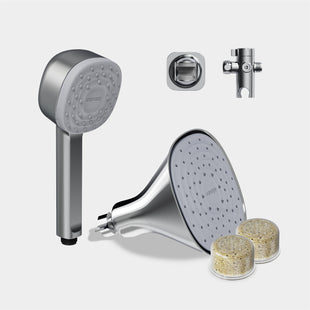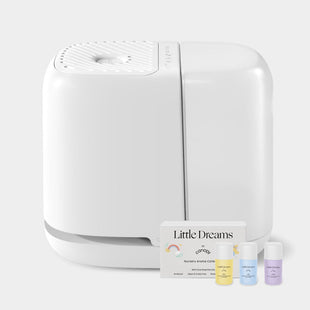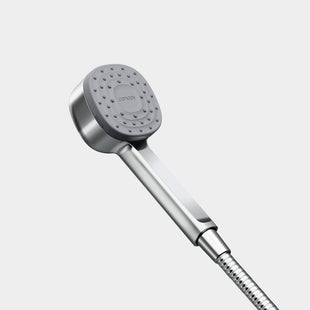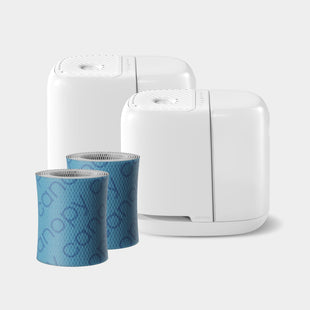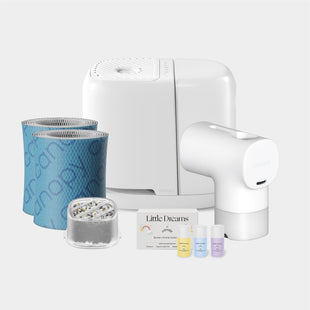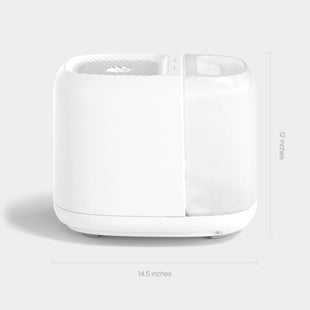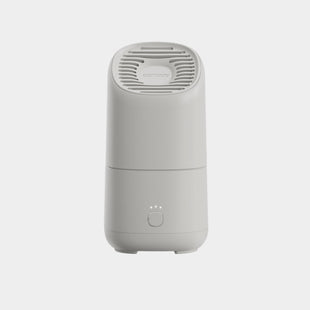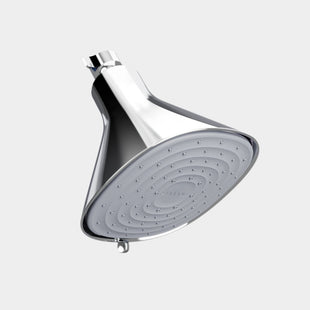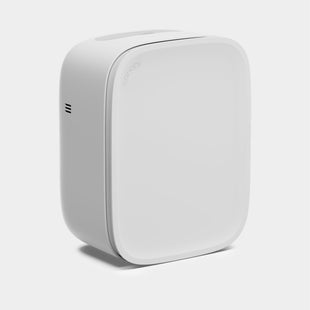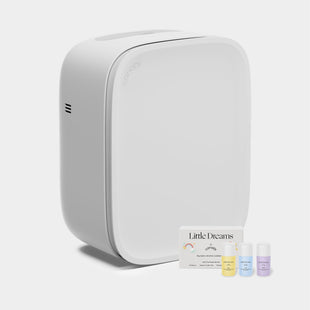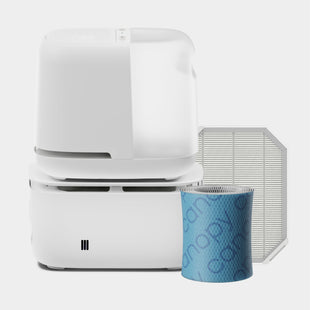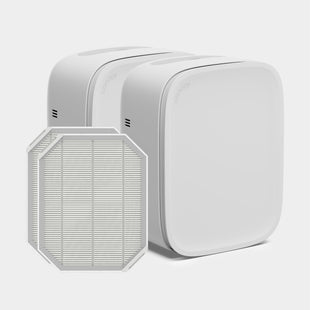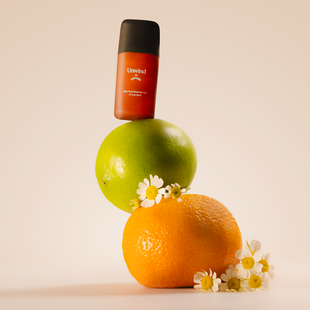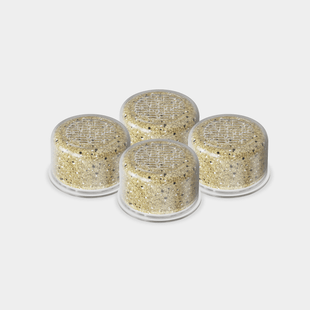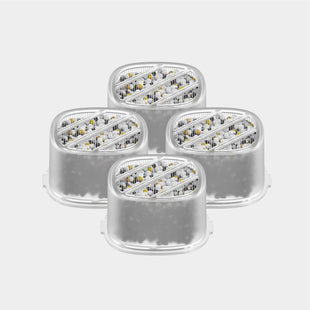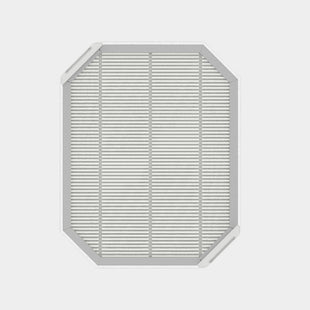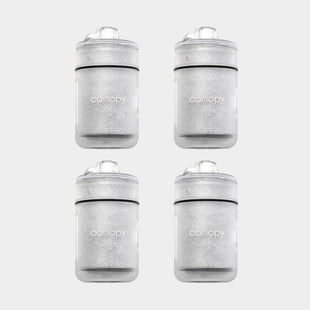This content has been reviewed and updated on November 8, 2023.
A newborn’s skin is soft and sensitive, and therefore, calls for a special approach when it comes to care. Your baby may be more prone to skin issues, such as irritation and eczema, but the right newborn skincare routine will help you prevent or manage these challenges. Here’s everything you need to know about the best baby skincare for a healthy, happy infant.
Why Is a Newborn Skincare Routine Important?
As with adults, a baby’s skin performs several important functions. Skin is the body’s largest organ and serves the following purposes:
- Protects the internal organs from external threats.
- Prevents germs and bacteria from entering the body and impacting internal organs.
- Regulates body temperature.
- Alerts the body of external threats through your sense of touch (think: pain and extreme temperatures).
- Converts sunlight into Vitamin D, which helps the body absorb calcium (a crucial mineral for bone development).
- Prevents body dehydration by regulating TEWL (transepidermal water loss).
When your baby’s skin is healthy, it achieves the functions above effectively. Yet, newborn skin is different from ours, making it more prone to issues that can prevent these outcomes. For one, it’s thinner and more porous. A baby's skin has more of a neutral pH compared to an adult’s more acidic composition. Products with fragrances and other additives, such as ethyl alcohol, could irritate your infant’s skin by altering its pH.
Many babies also experience contact dermatitis, an itchy and red rash that develops when exposed to allergens or other irritants. That’s because their immune system isn’t as developed. Finally, skin issues like eczema and cradle cap are common in infants, both because of the factors already discussed as well as other potential variables, such as genetic predispositions, diet, and environment.
Fortunately, many of the factors that can influence babies’ skin health can be controlled. Below are some tips for a safe and protective baby skincare routine.
6 Tips for the Best Baby Skincare
1. Simplify Bath Time

Even though your baby may love bath time, try to keep their suds sessions short and sweet. Long baths and warm water can strip away the skin's natural oils, causing dryness. This is especially true in the winter, when the air contains less moisture and skin is therefore already drier.
Most infants only need about three baths per week at most — possibly fewer if they have skin sensitivities like eczema. Stick to ten minutes max, and focus on the areas that need to be cleaned, such as the diaper area, skin folds, and feet. Use a baby washcloth and a gentle soap designed for babies’ sensitive skin. Rinse thoroughly, and pat them dry gently when bath time is over.
2. Moisturize
Moisturizing newborn skin can lock in hydration and prevent dryness. This is especially important in the diaper area, where wetness and evaporation can create a cycle that leaves the skin irritated and inflamed.
Use a baby-friendly product for moisturizing newborn skin after baths, and apply a diaper cream or balm after changes. If your child has eczema, you may need a thicker ointment specifically formulated for sensitive skin.
3. Choose Natural Ingredients
Whenever possible, choosing natural or plant-derived ingredients to use on your child is the best option. Organic skincare or body care products are more likely to be free from irritants like synthetic fragrances, artificial colors, parabens, sulfates, phthalates, and more.
4. Apply Sunblock
UV rays can cause sun damage even on overcast days, and because babies have more sensitive skin than we do, sun exposure can be especially damaging for them. While sunblock isn’t recommended for children under the age of 6 months, older infants should always be protected with sunblock that has an SPF of 30 or higher with both UVA and UVB protection.
5. Dress in Layers
Virtually every aspect of your baby’s body is going through rapid development in the early stages of life—including their sweat glands. Sometimes, this can make them more likely to develop an uncomfortable heat rash. Dressing your baby in layers allows you to control their temperature with ease by removing or adding layers as necessary. This approach is especially useful for navigating unpredictable weather changes, or for days when you’ll be going in and out with your baby.
6. Use a Humidifier
The fall and winter months bring colder weather and dry winds. We combat those cold temperatures by cranking the heater to stay warm. The combination of cold weather and higher thermostat temperatures can lead to a serious case of dry air.
Extended exposure to dry air can cause several health issues for your baby. Some of these health issues include dry eyes, dry skin, congestion, sore throat, and a proclivity for catching the flu or cold viruses.
Using a humidifier in your baby’s nursery can help raise humidity levels to a comfortable range, which will help your precious baby battle the elements with ease. In order to reap the benefits of humidity, a humidifier should be used for the nursery to reach optimal humidity (40-60%). Always use a cool mist evaporative humidifier: they won’t cause burns and supply clean, hydrated air to improve humidity levels.
How Can a Humidifier Help a Baby?
A humidifier is one of the most useful tools for your baby’s nursery. Whether you’re a first-time parent or a seasoned veteran with multiple children, a humidifier is an important device to have on hand. Regular use of a humidifier in your baby’s nursery can help them stay healthy, supporting their wellness in a number of ways.

Ease Cold Symptoms
When your child catches a cold, congestion interferes with their breathing, a dry and itchy throat leads to excessive coughing, and the symptoms can be overall uncomfortable for babies.
A humidifier can help ease cold symptoms in both adults and children. The increased moisture content from your humidifier device will help to lubricate the throat and nasal passages, resulting in congestion relief and the improvement of a dry, scratchy throat.
Improve Dry, Irritated Skin
Regular use of a humidifier in your child’s nursery can reduce transepidermal water loss (TEWL), resulting in higher levels of moisture on the skin. TEWL is the process of the skin releasing water into the surrounding environment by way of evaporation. Dry and cold weather conditions increase TEWL, while warm, humid environments decrease TEWL.
Optimal humidity can improve the moisture content of the skin, which hydrates the skin and reduces the likelihood of eczema flare-ups.
Help Reduce the Risk of Illness
Maintaining optimal levels of humidity year-round can ensure a comfortable, safe, and healthy environment for your baby. Optimal humidity levels can help reduce the spread and survival of viruses, as well as ensure proper lubrication of throat and nasal passages to prevent infection, congestion, and cough. Additionally, extra moisture keeps the skin moisture barrier intact, preventing dry or dehydrated skin
Use your smart thermostat or a hygrometer to measure your home humidity levels. Again, the optimal humidity range is 40-60%
Which Humidifier Is the Best for Your Baby?
When it comes to choosing the right humidifier for your baby, safety is of utmost importance. Canopy is the cleanest humidifier on the market, making it perfect for your nursery. Canopy’s cool mist technology provides invisible clean, filtered moisture, making it safe for your baby’s fragile skin and lungs. It’s also an evaporative model, meaning you won’t have to stress about hot steam or vapor which could cause painful burns.
Plus, there’s no need to worry about potential mold exposure. Canopy’s Smart Persistent Airflow (SPA) technology prevents mold growth inside the humidifier, so you never have to worry about mold causing any harm to your baby. Not only is Canopy the cleanest humidifier on the market, but it’s also the easiest to maintain. When it’s time to clean, throw your Canopy in the dishwasher for a hassle-free cleaning experience.
If you’re seeking a humidifier for your baby’s room, our Little Dreams bundle is your must-have nursery upgrade. Designed specifically with our littlest customers in mind, the Nursery Humidifier features the same clean moisture and mold-inhibiting* design inside the humidifier as our other models, along with aroma diffusion for soothing scents and an auto mode for your convenience. For larger living spaces, consider running our Humidifier Plus during daytime play. This powerful humidifier can add moisture back into spaces of up to 1,000 square feet, making it perfect for large rooms and open floor layouts.
*Mold inhibition limited to device interior. Does not treat air or environment. 3rd party lab-tested with Aspergillus niger (ATCC 6275, 16404).

